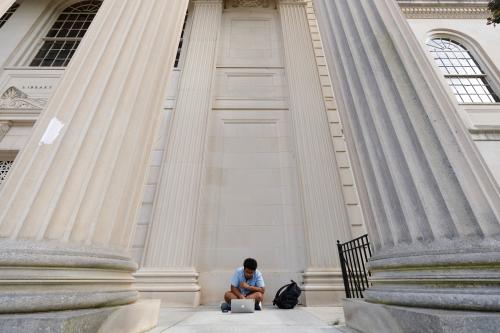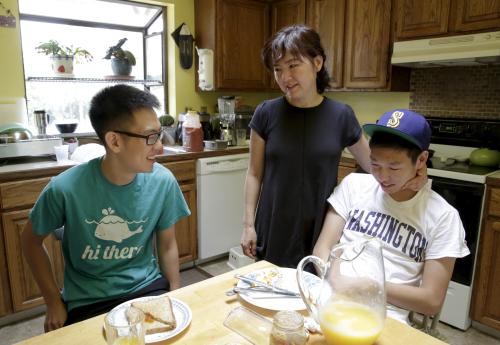The following is a testimony delivered by Adam Looney to the U.S. Senate Committee on Health, Education, Labor and Pensions on April 10, 2019. More information about the hearing and the full hearing video can be found here.
Chairman Alexander, Ranking Member Murray, and Members of the Committee, thank you for the opportunity to testify today.
While federal loans and grants play a central role in financing valuable investments in education, especially for low- and middle-income families, not all institutions or programs lead to success. Lending money to someone to attend an educational program with a demonstrated record of failure only harms the student. Unpayable loan burdens not only cost taxpayers, but they haunt borrowers for years.
Poor student outcomes are caused by low-quality institutions and programs. At any given college, students from low- and high- income families have similar earnings and repayment outcomes. As a result, colleges level the playing field across students with different socioeconomic backgrounds—often lifting all boats, but sometimes sinking them. While disadvantaged students are concentrated in programs with poor outcomes, the research is clear about the direction of causality. The problem is the schools, not the students.
When it provides financial aid, the federal government has a responsibility – to students, to their families, and to taxpayers – to direct those resources to successful programs and to limit aid at poor-performing institutions.
Accountability policies are an appropriate response to protect to taxpayers’ investments in students, increase the economic value of those investments, and to protect students from economic harm. Federal accountability policies were effective in the past. They remain familiar features of the educational policy landscape today. But they are no longer effective because of legislative and regulatory changes, because of expansions of federal aid that falls outside of current accountability systems, like increased graduate lending, and because of the unintended effects of borrower protections, which, by helping students avoid default, have shielded their institutions from accountability.
Federal accountability policies should focus on student outcomes. For instance, an institution’s repayment rate–how much a cohort of borrowers has repaid several years after leaving school–would be a better indicator of student success, institutional or program quality, and the return on federal investments, than the measures we use now.
Early repayment outcomes are predictive of long-run loan success, easy to understand, and practical to measure. Because successful loan repayment results from the culmination of many incremental milestones—degree completion, finding a job, earning enough to pay down the loan—it summarizes in a simple way a complex series of achievements.
The repayment rate could form the basis for the simple, familiar systems we have today, like the Cohort Default Rate rule or the Gainful Employment rule, in which institutions or programs are assessed relative to a threshold and lose eligibility if their performance falls below a minimum level. Or, the repayment rate could be used as the basis for risk-sharing systems in which institutions bear a portion of the financial consequences that students and taxpayers face from poor outcomes.
In either case, the performance benchmarks and sanctions must be sufficient to drive real change, and the rules should apply broadly, including to graduate and parent borrowers. Outcome-based accountability measures would complement other federal rules, like the so-called 90/10 rule, and other elements of the accountability triad.
Congress and the public should see the data underlying proposed repayment metrics, to understand how they vary across colleges or demographic groups, before drawing bright lines. And we should consider how to improve accountability at institutions that receive federal funds but don’t participate in loan programs.
But those unknowns pale in importance to what we know is happening to students today. We do students no service by subsidizing their attendance at programs with demonstrated records of failure or by encouraging them to take federal loans we know they can’t repay. The evidence shows that policies that close poor-quality programs don’t limit access to college, only access to poor-quality colleges: students move on to better schools. And there are thousands such institutions across the U.S. that regularly propel low-income, disadvantaged students up the income ladder. Redirecting federal dollars to those institutions would protect taxpayers and improve student outcomes.
The Brookings Institution is committed to quality, independence, and impact.
We are supported by a diverse array of funders. In line with our values and policies, each Brookings publication represents the sole views of its author(s).







Commentary
TestimonyReauthorizing the Higher Education Act: Strengthening accountability to protect students and taxpayers
April 10, 2019